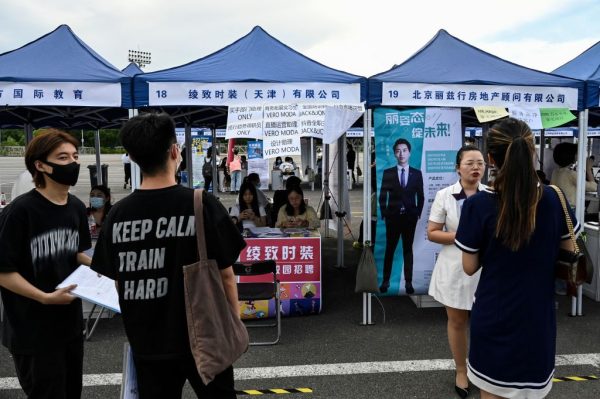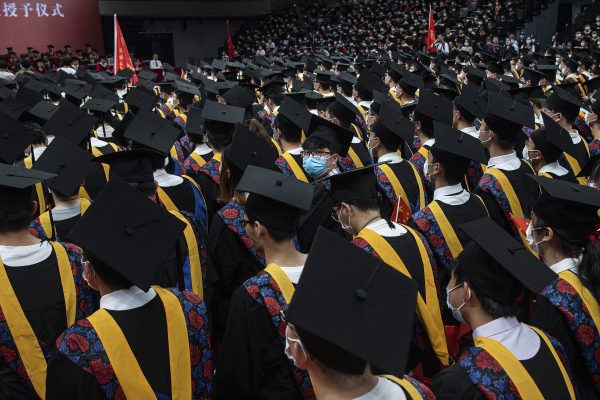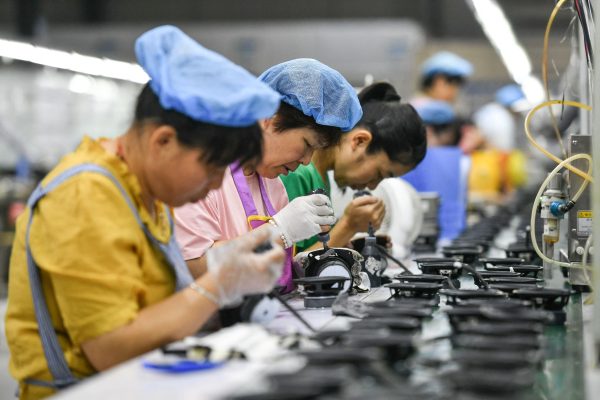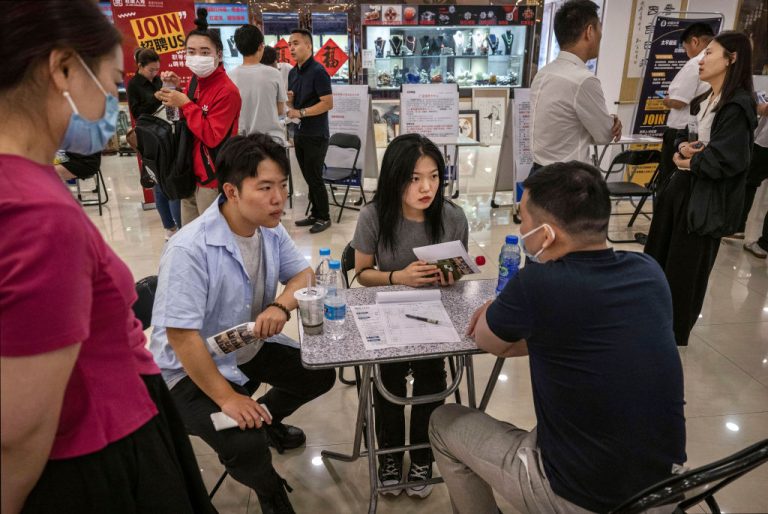Amidst a sputtering economy and weaker growth than forecasted China’s youth appear to be bearing the brunt of the country’s economic crisis with the Chinese Communist Party (CCP) admitting that youth unemployment has surged past 20 percent.
Chinese government data has revealed that more than one in five Chinese youth between the ages of 16 and 24 are unemployed, and that millions of this year’s college graduates will have trouble securing the job promised by their hard work.
The grim figures come as the world’s second largest economy shows some signs of recovery, with key indicators like retail sales, manufacturing, exports and investment growing slightly but well behind the ambitious targets set by the communist regime.
Following a slight post-lockdown surge in economic activity, China experienced a sharp decline in exports this past May when exports slumped by 7.5 percent year-on-year, according to China’s Customs Bureau. Authorities had forecasted a mere 0.4 percent decrease in exports. Even these figures are suspect as the Chinese Communist Party (CCP) is notorious for fabricating data.

A perfect storm
Both economic and societal factors are driving the youth unemployment rate; a perfect storm that directly threatens China’s post-COVID recovery and the regime itself.
Success
You are now signed up for our newsletter
Success
Check your email to complete sign up
The term, “lying flat” has become popular in China in recent years. It means to shed all ambitions of securing a good job, establishing a family, buying a home and to simply eke out an existence while exerting the bare minimum of effort; a state countless Chinese youth have adopted.
Chinese leader Xi Jinping appears to have attempted to address the phenomena by encouraging the nation’s youth to “eat bitterness” during a speech in July 2021 at the 100th anniversary of the Chinese Communist Party.
“Eat bitterness,” is a Chinese term that aims to inspire one to be gritty, endure hardship and to work tirelessly, even suffer. Xi said that China’s youth have a responsibility to “rejuvenate the nation,” however not many youth appear willing to shoulder the task.
If one has ambition and is lucky enough to find a job, China’s work culture promises to make it a grueling experience; a reality that has prompted some youth to abandon well paying jobs.
Particularly in the internet industry, Chinese work culture is famously tough. It expects employees to work a 996 schedule, meaning working from 9:00 am to 9:00 pm, six days a week.
Jack Ma, the embattled Chinese billionaire and founder of internet giant Alibaba famously said that it was a “blessing” for Chinese workers to be part of the 996 work culture. However the trend has had disastrous effects prompting the CCP to attempt to crack down on the practice.
In an August 2021 announcement by China’s top court and labor ministry it wrote, “Legally, workers have the right to corresponding compensation and rest times or holidays. Complying with national working hours is the obligation of employers,” following 10 court decisions related to labor disputes.

Useless degrees
For those with ambition who chose to attend university or college with the goal of securing a well-paying job, things are grim as a significant lack of job openings has resulted in dozens, if not hundreds of candidates competing for a single position.
Chinese social media platforms are awash in images of graduates slumped on the ground or throwing away their degrees as recent graduates make light of their time spent in post secondary institutions, implying that the time was wasted.
Employers are reluctant to hire new graduates and are reportedly turning away qualified individuals out of the fear that China’s extended COVID-19 measures were a barrier for university students to gain important skills and work experience.
Connie Xu, a 22-year-old graduate who has been on the job hunt, told the South China Morning Post (SCMP), “They said I’m a greenhorn. In the words of my interviewer, I am a piece of blank paper without any actual work experience.”
This is a reality for many of the 11.6 million students that graduated in China this past June.
Ingird Xie, who studied abroad and graduated with a master’s degree in applied linguistics, worked in a Korean supermarket in Brisbane for several months after graduating but decided to move back to her home city of Kunming to find an entry level position as an English teacher.
What she discovered is that she was not alone in her ambitions. “A lot of people studied abroad and want the same thing,” she told The Guardian. A friend of hers was attempting the same thing, and applied for an English teaching position along with approximately 100 other people. She didn’t get the job.
READ MORE:
- Premier Li Qiang Talks Up China’s Growth at World Economic Forum Meeting
- Janet Yellen to Visit China in Attempt to Deepen Relations
- Chinese Democracy Activists Exiled in the West to Be ‘Pursued for Life’, Hong Kong Leader Says

A sputtering economy
In mid-June, Larry Hu, chief China economist for the Macquarie Group wrote, “Corporates are reluctant to hire because of soft consumer demand, while consumers are reluctant to spend because of [a] weak labor market.”
Experts predict that this trend will continue for the foreseeable future with Zhiwei Zhang, chief economist at Pinpoint Asset Management telling Reuters, “There is more pressure for the government to boost domestic consumption in the rest of the year, as global demand will likely weaken further in the second half.”
These realities are not boding well for China’s youth, prompting Gerard DiPippo, a senior fellow at the Center for Security and International Studies’ economics program, to say that China’s two types of youth workers, the less educated and college graduates, are both “doing quite badly in China by Chinese standards.”
In response, China’s national government has implemented a 15-point plan in an attempt to boost youth employment, including offering subsidies to small- and medium-size enterprises to recruit college graduates, as well as support for aspiring entrepreneurs while also encouraging state-owned enterprises to hire new graduates.
So far the measures do not appear to be having their intended impact.
In stark contrast to what Western economies are doing to rein in inflation, China is slashing its short-term interest rates, signaling that Chinese lawmakers believe the economy needs more stimulus.
No matter what Beijing does, however, the country’s recovery will not be driven by massive growth, which the communist regime claimed it experienced in the 2000s.
Even before the COVID-19 pandemic emerged, China’s economy was showing signs of weakening with unemployment soaring. Independent studies estimated that China’s real unemployment rate was a staggering 22 percent as early as 2018.
Post-COVID China doesn’t look like it will fare much better.














